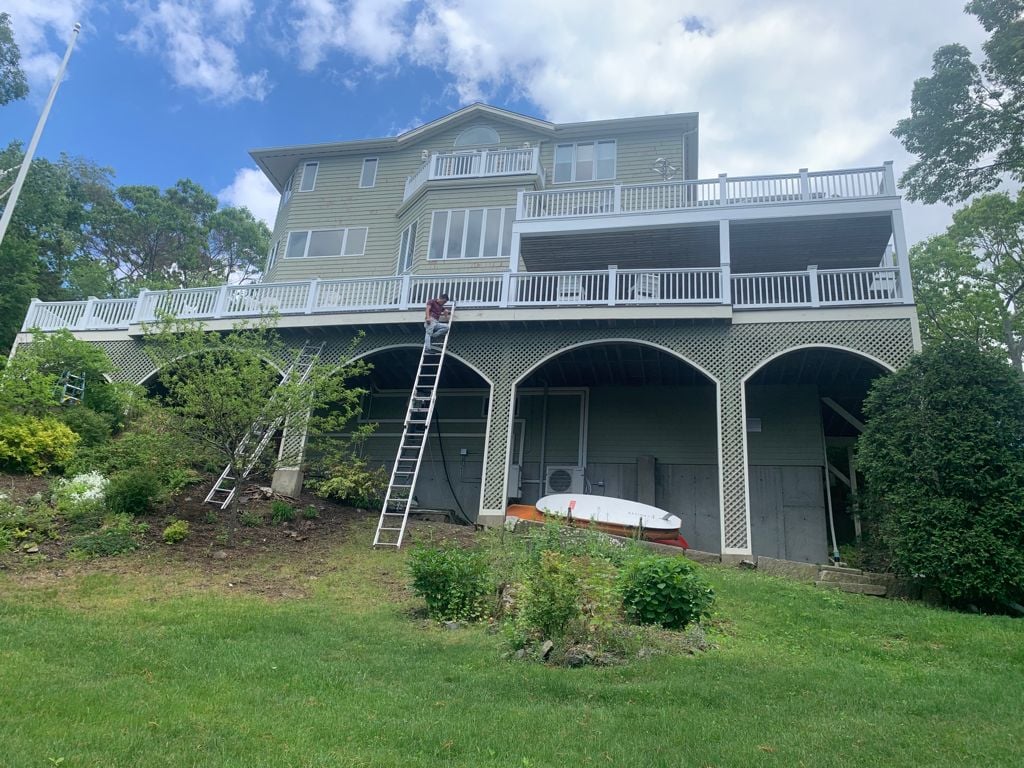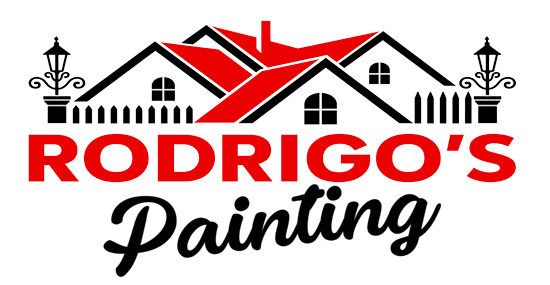
Choosing the right finish for your exterior house paint can make the difference between a stunning, long-lasting paint job and one that fades, peels, or requires frequent touch-ups. The finish you select affects not only your home’s appearance but also its protection against harsh weather conditions, UV rays, and daily wear and tear.
When it comes to professional exterior painting services, experienced contractors like Rodrigo’s Paintings in Lynn, MA understand that the paint finish is just as crucial as the paint quality itself. With over a decade of experience serving homeowners throughout the Lynn area, their team at has seen firsthand how the right finish choice can extend the life of your paint job by several years while maintaining your home’s curb appeal.
Understanding Paint Finish Basics
Paint finishes, also known as paint sheens, refer to the level of gloss or shine in the dried paint film. The finish is determined by the ratio of pigment to binder in the paint formula. Higher gloss finishes contain more binder, creating a smoother, more reflective surface, while lower gloss finishes have more pigment, resulting in a flatter, more matte appearance.
The choice of finish directly impacts your paint’s durability, cleanability, and overall aesthetic appeal. Each finish type offers unique advantages and is better suited for specific applications and environmental conditions.
The Four Main Exterior Paint Finishes
1. Flat or Matte Finish
Flat finishes have the highest concentration of pigment and the least amount of binder. This creates a non-reflective, velvety surface that’s excellent at hiding imperfections.
Advantages:
- Hides surface flaws and imperfections very well
- Offers rich, deep color and smooth coverage
- Non-reflective surface reduces glare, especially under sunlight
- Often more affordable than glossier finishes
Disadvantages:
- Harder to clean—can stain easily
- Less resistant to dirt, moisture, and mildew
- Not as durable in harsh weather
- Not ideal for high-traffic or exposed areas
2. Satin Finish (Also called Low-Luster or Eggshell)
Satin is the most popular exterior paint finish for a reason—it offers a nice balance between appearance and performance. It has a soft, slight sheen that gives surfaces a clean look without being too shiny.
Advantages:
- Easier to clean than flat paint
- More durable and weather-resistant
- Hides minor imperfections better than glossier finishes
- Great for a smooth, modern look on large surfaces
Disadvantages:
- Can still show surface flaws more than flat finishes
- Slight sheen may highlight roller or brush marks if not applied carefully
- Needs good surface prep for best results
3. Semi-Gloss Finish
Semi-gloss paint has a noticeable shine and is commonly used for exterior trim and accents. It’s more durable and moisture-resistant than flat or satin, making it ideal for areas that need extra protection.
Advantages:
- Highly durable and easy to clean
- Resists moisture, mildew, and dirt
- Adds a polished look to details like trim, doors, and shutters
- Stands up well to repeated washing or scrubbing
Disadvantages:
- Shows surface flaws and application marks more easily
- Can highlight uneven surfaces
- Reflective sheen may not be suitable for large wall areas
4. Gloss Finish (High-Gloss)
Gloss finishes provide the highest level of shine and durability. They’re rarely used on large surfaces but are perfect for accents where maximum durability and a bold, shiny appearance are desired.
Advantages:
- Extremely durable and long-lasting
- Best resistance to moisture, stains, and wear
- Offers a dramatic, high-shine look
- Very easy to clean
Disadvantages:
- Surface must be perfectly prepped—gloss highlights every flaw
- Can look too shiny or harsh on large areas
- More difficult to apply evenly without visible brush or roller marks
Expert Tip: Surface Preparation Matters Most
Regardless of which finish you choose, proper surface preparation accounts for 80% of your paint job’s success. Clean, prime, and repair all surfaces before applying any exterior house paint finish. Even the best finish won’t perform well over poorly prepared surfaces.
Comparative Analysis of Paint Finishes
| Finish Type | Durability | Cleanability | Best Use | Lifespan |
|---|---|---|---|---|
| Flat/Matte | Low | Difficult | Low-traffic siding | 3-5 years |
| Satin | Moderate | Good | General siding | 5-7 years |
| Semi-Gloss | High | Excellent | Trim, doors, shutters | 7-10 years |
| Gloss | Maximum | Excellent | High-exposure areas | 8-12 years |
Choosing the Right Finish for Different Areas of Your Home
Understanding where to apply each paint finish on your home’s exterior ensures optimal protection and aesthetic appeal. Different areas of your home face varying levels of exposure to weather elements, UV rays, and physical contact, requiring strategic finish selection.
High-Exposure Areas: Trim work, window frames, doors, and shutters experience the most direct weather impact and require semi-gloss or gloss finishes. These areas benefit from the superior moisture resistance and easy maintenance these finishes provide. The harder surface created by higher binder content protects against water penetration and allows for easy cleaning of dirt and debris.
Protected Areas: Siding under overhangs, covered porches, and areas with natural wind barriers can effectively use satin finishes. These locations receive less direct weather exposure, allowing you to prioritize the balanced aesthetics and moderate durability that satin finishes offer while maintaining cost-effectiveness.
Large Surface Areas: Main siding sections covering the majority of your home’s exterior work well with satin finishes, which provide the ideal compromise between protection and appearance. The subtle sheen helps resist dirt accumulation while maintaining the rich color depth that enhances your home’s overall curb appeal.
Detail Work and Accents: Decorative elements, porch railings, and architectural details often benefit from semi-gloss finishes due to their frequent handling and exposure. The enhanced durability and cleanability make maintenance easier while highlighting these important design features.
Climate Considerations for Paint Finishes
Your local climate plays a crucial role in determining what finish is best for exterior house paint. Different weather patterns and environmental conditions affect paint performance in various ways.
In coastal areas like Lynn, MA, where salt air and humidity are constant factors, semi-gloss finishes provide superior protection against moisture penetration and salt damage. The harder surface resists the corrosive effects of salt spray while remaining easy to clean.
For specialized surfaces like brick, consider consulting professionals who understand how different finishes interact with various materials through brick painting expertise.
High Humidity Regions: Choose semi-gloss or gloss finishes for better moisture resistance and mold prevention. These finishes create a barrier that prevents moisture from penetrating the paint film.
Extreme Temperature Fluctuations: Satin finishes offer good flexibility to handle expansion and contraction cycles without cracking or peeling.
High UV Exposure: All finish types benefit from high-quality UV-resistant formulations, but semi-gloss finishes generally maintain their appearance longer under intense sun exposure.
Cost Analysis and Value Considerations
While higher-gloss finishes typically cost more initially, they often provide better long-term value due to their extended lifespan and reduced maintenance costs. The best exterior house paint finish should strike a balance between upfront expenses and long-term performance. Higher-gloss finishes generally cost 10–20% more than flat options, and premium paint formulations with superior finish performance often justify the higher price. However, professional application costs tend to remain similar regardless of the finish choice.
In terms of long-term benefits, semi-gloss finishes may last two to three years longer than flat finishes, reducing the need for frequent repainting. They also lower cleaning and maintenance costs, offer better protection against weather damage, and help preserve curb appeal, which in turn maintains property value. Professional house facade painting services can further maximize your investment by ensuring the right finish selection and proper application techniques.
Common Mistakes to Avoid
Many homeowners make finish selection errors that compromise their paint job’s performance and longevity. Understanding these pitfalls helps ensure better outcomes.
Surface Preparation Shortcuts: Rushing surface prep to save time or money inevitably leads to poor finish performance regardless of quality. Every finish type requires proper cleaning, priming, and repair work.
Climate Mismatching: Choosing finishes unsuited to your local climate conditions leads to premature failure. Research your area’s specific challenges and select accordingly.
Application Timing: Applying any house paint finish in extreme temperatures, high humidity, or windy conditions affects final appearance and durability.
Frequently Asked Questions
What is the most durable finish for exterior house paint?
Semi-gloss and gloss finishes offer the highest durability for exterior applications. They provide superior weather resistance, moisture protection, and longevity, typically lasting 7-12 years depending on climate conditions and surface preparation quality.
Can I use flat paint on exterior siding?
Yes, flat paint can be used on exterior siding, particularly in areas with minimal weather exposure. However, it offers less protection against moisture and is harder to clean than higher-gloss alternatives. It works best on textured surfaces where hiding imperfections is a priority.
How do I choose between satin and semi-gloss for my home’s exterior?
Choose satin for general siding applications where you want a balance of durability and appearance. Opt for semi-gloss on trim, doors, shutters, and high-exposure areas that need maximum protection and easy maintenance. Consider your climate, with more humid or harsh conditions favoring semi-gloss.
Does paint finish affect color appearance?
Yes, paint finish significantly affects color appearance. Higher-gloss finishes appear lighter and more vibrant due to light reflection, while flat finishes provide deeper, more muted color tones. Always test your chosen color in the selected finish before making final decisions.
Ready to Transform Your Home’s Exterior?
Don’t let the wrong paint finish compromise your home’s protection and beauty. Get expert guidance on selecting the perfect finish for your exterior house paint project.
Contact Rodrigo’s Paintings today for professional consultation and superior exterior painting services in Lynn, MA and surrounding areas.
Licensed • Insured • Locally Owned
Selecting what finish is best for exterior house paint requires careful consideration of your home’s specific needs, local climate conditions, and long-term maintenance preferences. By understanding the characteristics and applications of each finish type, you can make an informed decision that protects your investment while enhancing your home’s curb appeal for years to come.
